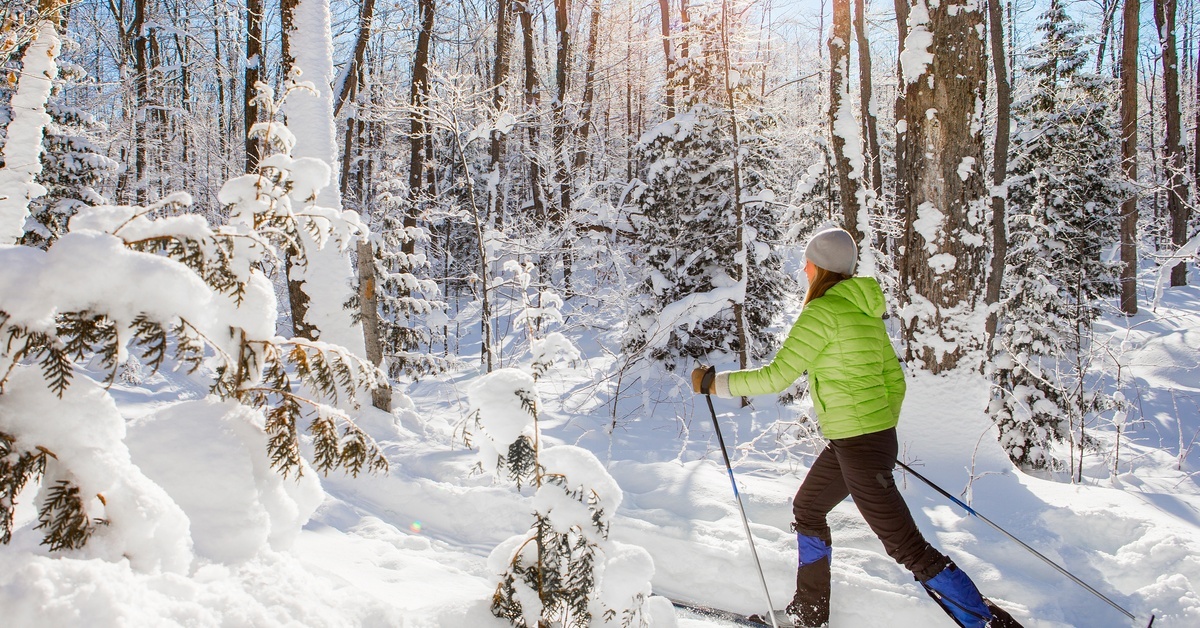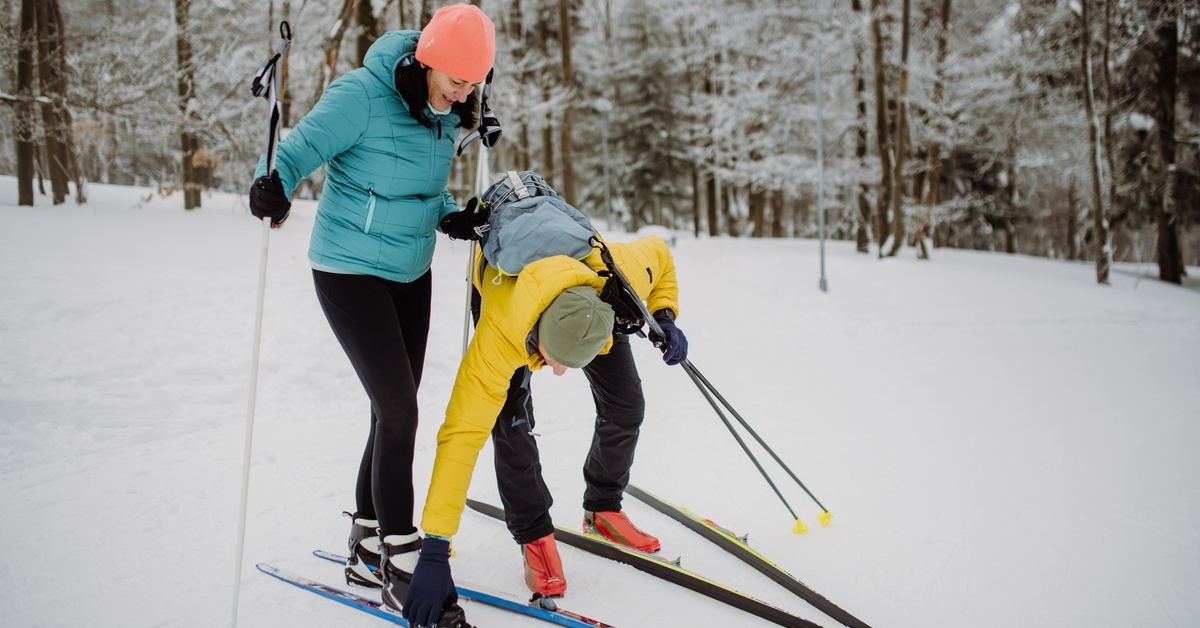Posted by Admin on Jun 4th 2025
A Beginner’s Guide to Choosing Cross-Country Skis
Dreaming of gliding across snowy landscapes and exploring winter’s quiet beauty? Whether you’re a beginner skier or someone looking to transition from downhill skiing to cross-country, choosing the right set of skis can feel overwhelming.
Equipment tailored to your needs provides a safe and enjoyable experience in the snow. Feel confident in picking the skis that fit your needs perfectly by learning about the different styles and accessories.
Understanding Types of Cross-Country Skis
There are different types of cross-country skis that you can use for your next vacation. To determine which style works best for you, learn the differences between classic and varied skis.
Classic Cross Country Skis
If you picture yourself gliding along groomed tracks in a serene snow-covered forest, you’ll likely need classic cross-country skis. These skis are versatile and ideal for beginners.
Their long, narrow design allows for smooth, easy gliding on prepared trails. The core of the ski is lightweight, often made from materials like wood, foam, or composite, to balance strength and flexibility. Paired with their cambered profile, you’ll experience efficient kick-and-glide motion.
Skate Skis
For those drawn to speed and athletic challenges, consider skate skis. Unlike classic skis, skate skis specialize in groomed trails with harder surfaces. They allow you to push off the edges in a motion like ice skating.
Skate skis have a higher and stiffer camber than classic skis. This distributes the skier’s weight evenly and prevents the ski base from dragging on the snow during the glide phase. Their shorter length makes them less forgiving for beginners, but for intermediate and advanced skiers, they offer agility and speed.
Backcountry Skis
Exploring untracked wilderness and venturing off the beaten path requires a sturdy set of backcountry skis. Built wider than classic and skate skis, they provide the stability and comfort needed to glide through deep, untouched snow. Many models feature metal edges to give you extra grip and control on steep or icy terrain.
Identifying Terrain and Conditions

Just as people drive vehicles for specific terrains, cross-country skis work well for different snow conditions. Depending on where your next ski trip takes you, the terrain will influence the ideal ski design for your adventures.
Groomed Trails and Tracks
Are you planning to ski exclusively on groomed tracks? No need to worry about trees or obstacles that could damage your equipment. Classic skis with grip zones or waxable bases are perfect for these conditions as they maximize glide without compromising stability or control.
Backcountry Terrain
For off-trail enthusiasts exploring untouched snow, consider backcountry skis. Their wider bases provide extra stability, while metal edges offer better control on descents. Backcountry skis will prove invaluable when tackling rugged hills and icy slopes.
Matching Skis to Your Skill Level
Your experience and skill level will determine what kind of skis you should invest in. Beginners, intermediates, and experts each require different equipment to improve their stride and make the experience fun, so assess your skill level before finalizing your purchase.
Beginners
New to the trails? Start with skis that feature stability and an easier glide. For example, waxless skis with fish scales are a popular choice for their low maintenance and ease of use.
Advanced Skiers
If this isn’t your first time on the snowy mountaintops, you may want to invest in a sturdier pair of skis. Skilled skiers looking to push their limits may prefer waxable skis. While these require more preparation, they deliver precision and unparalleled glide efficiency.
Considering the Fit and Length of Your Skis
To make your skiing experience comfortable and catered to you, choose a ski length and size to accommodate your stature. Skis that are too long or short can affect balance and maneuverability, which could make your time on the trail less enjoyable. Your height and weight are key factors in selecting the correct ski length.
Measuring Ski Length
Classic skis should generally be 15 to 25 cm (6 to 10 inches) longer than your height for optimal glide. Skate skis, however, are slightly shorter, typically measuring about 5 to 15 cm (2 to 6 inches) taller than the skier.
Weight Considerations
Heavier skiers may require stiffer skis to boost their grip on snowy terrain, while lighter individuals should look for more flexible models. Most manufacturers provide weight recommendations as a guide, so follow these guides to find the perfect ski set for you.
Selecting the Right Bindings and Boots
Bindings and boots secure your feet and affect your control and overall comfort on the trail. As you’re choosing cross-country skis for your next trip, prioritize adequate footwear to keep your legs safe from injury.
Understanding Binding Types
The two main binding systems, New Nordic Norm (NNN) and Salomon Nordic System (SNS), require compatible boots. NNN uses two thin parallel rails, while SNS has a single wider rail.
NNN is more widely supported by manufacturers and has variants like NNN BC for backcountry skiing. SNS, primarily made by Salomon, has variants like Profil for recreational use and Pilot for advanced skiing but has fewer options overall as the market shifts toward NNN. No matter which binding style you choose, look for features will protect your feet as you glide through snowy terrain.
Prioritizing Comfort
A good pair of boots should keep your feet warm and supported while offering enough flexibility for natural movement. Find footwear that offers a snug but not restrictive fit before finalizing your choice.
The Importance of Accessories

As you’re purchasing the perfect footwear for your skis, check out other skiing accessories in your local sporting goods store. Pairing your skis with the correct poles and accessories will help you enjoy your experience.
Ski Poles for Enhanced Stability
Ski poles provide more stability and control when navigating through snow, especially for beginners. They also assist in propelling the user forward to reach their destination faster and safer. Choose poles that match your height and skiing style.
Goggles, Gloves, and Layers
Invest in high-quality goggles to protect your eyes from glare and snow. A solid pair of gloves will keep your hands warm without compromising grip. Use these accessories to improve your visibility and stay safe in dangerous terrains.
If you’re ready to find the perfect set of cross-country skis for your next trip, stop by our store at Yeagers Sporting Goods & Marina for high-quality products. You can browse our collection at our in-person location, or visit our online ski shop for a wider selection of products. Strap in for a safe and exciting trip through snowy landscapes in your new, stylish set of cross-country skis today!

